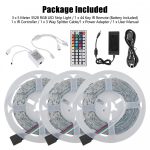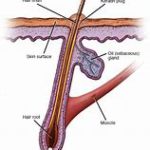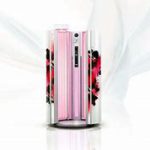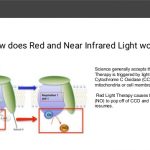Last Updated on 12 months by Francis
Color light therapy, also known as phototherapy, is a non-invasive form of treatment that uses different colors of light to improve various skin conditions. One of the conditions that can be treated with color light therapy is dark spots, which are also known as hyperpigmentation. In this article, we will be discussing the effectiveness of different color lights for treating dark spots and how they work.
Contents
Understanding Dark Spots
Dark spots are a common skin concern that can be caused by several factors, including sun exposure, aging, hormonal changes, and genetics. These spots can make your skin look uneven and dull, and they can be challenging to get rid of. While there are several treatment options available, light therapy has emerged as an effective and non-invasive way to reduce the appearance of dark spots.
Causes of Dark Spots
Before we dive into the benefits of light therapy for dark spots, let’s take a closer look at what causes these spots. One of the primary causes of dark spots is sun exposure. When your skin is exposed to the sun’s UV rays, it produces more melanin, which is the pigment that gives your skin its color. Over time, this excess melanin can accumulate in certain areas of your skin, leading to dark spots.
Another common cause of dark spots is aging. As you get older, your skin produces less collagen and elastin, which are the proteins responsible for keeping your skin firm and elastic. As a result, your skin becomes thinner and more prone to damage, including dark spots.
Treatment Options for Dark Spots
There are several treatment options available for dark spots, including topical creams, chemical peels, and laser therapy. Topical creams contain ingredients like hydroquinone, which can help to lighten dark spots over time. Chemical peels involve applying a chemical solution to the skin to remove the top layer, revealing brighter, more even-toned skin underneath. Laser therapy uses a beam of light to target the melanin in dark spots, breaking it up and reducing their appearance.
What is Light Therapy?
Light therapy is a non-invasive treatment that uses specific wavelengths of light to improve various skin concerns, including dark spots. This treatment is also known as phototherapy and can be administered in several forms, including LED light therapy, red light therapy, and blue light therapy.
LED Light Therapy
LED light therapy involves using a device that emits specific wavelengths of light to penetrate the skin and stimulate the body’s natural healing processes. LED light therapy is a safe and painless treatment that can be used to improve several skin concerns, including dark spots.
Red Light Therapy
Red light therapy is a type of phototherapy that uses red light wavelengths to penetrate the skin and promote collagen production. This treatment can help to reduce the appearance of fine lines, wrinkles, and dark spots, leaving your skin looking brighter and more youthful.
Blue Light Therapy
Blue light therapy is another form of phototherapy that uses blue light wavelengths to target acne-causing bacteria in the skin. While blue light therapy is not specifically designed to treat dark spots, it can help to improve the overall appearance of your skin by reducing acne breakouts and inflammation.
What Color Light Therapy is Best for Dark Spots?
When it comes to choosing the best color light therapy for dark spots, red light therapy is the most effective. Red light wavelengths can penetrate the skin’s surface and stimulate collagen production, which can help to reduce the appearance of dark spots over time.
How Does Red Light Therapy Work?
Red light therapy works by penetrating the skin’s surface and stimulating the body’s natural healing processes. When red light wavelengths are absorbed by the skin, they trigger the production of collagen and elastin, which are the proteins responsible for keeping our skin firm and elastic.
Benefits of Red Light Therapy for Dark Spots
Red light therapy has several benefits when it comes to reducing the appearance of dark spots. Firstly, this treatment can help to stimulate collagen production, which can improve the overall texture and tone of your skin. Secondly, red light therapy can help to reduce inflammation, which is a common cause of dark spots. Finally, red light therapy can help to improve blood circulation, which can help to transport nutrients and oxygen to the skin, promoting healing and reducing the appearance of dark spots.
FAQs on What Color Light Therapy for Dark Spots
How does light therapy help to reduce dark spots on the skin?
Light therapy is a non-invasive treatment that uses different wavelengths of light to penetrate the skin and stimulate the production of collagen and elastin. It can also help to reduce the appearance of dark spots on the skin by decreasing the production of melanin, which is responsible for the dark pigment. Depending on the color of light used, it can also have anti-inflammatory properties that reduce redness and inflammation.
What color light is the best for treating dark spots?
Red light therapy is the most popular for treating dark spots as it has been shown to stimulate collagen production and reduce the production of melanin. It is also known to improve skin texture and tone, while reducing fine lines and wrinkles. Blue light therapy can also be effective as it has anti-bacterial properties that can reduce acne and breakouts, which may have caused the dark spots to begin with.
Can light therapy completely remove dark spots?
Unfortunately, light therapy cannot completely remove dark spots, but it can significantly reduce their appearance. The effectiveness of light therapy depends on various factors such as the depth and severity of the dark spots, age, skin type and overall health. A combination of light therapy with other treatments such as chemical peels, microdermabrasion or topical creams may be recommended to achieve the best results.
Can I perform light therapy on my own at home?
Yes, there are various light therapy devices available for use at home. However, it is important to choose a reputable brand and follow the instructions carefully to ensure safe and effective use. It is also recommended to first consult with a dermatologist to determine the best treatment plan for your specific skin condition.
Are there any potential side effects of light therapy for dark spots?
Generally, light therapy is considered safe and has minimal side effects such as redness, swelling or itchiness, all of which usually subside within 24 hours. However, excessive use or incorrect application can result in burns, blisters or hyperpigmentation. It is important to follow the instructions given by the manufacturer or healthcare professional to minimize potential side effects.


.jpg)

.jpg)


